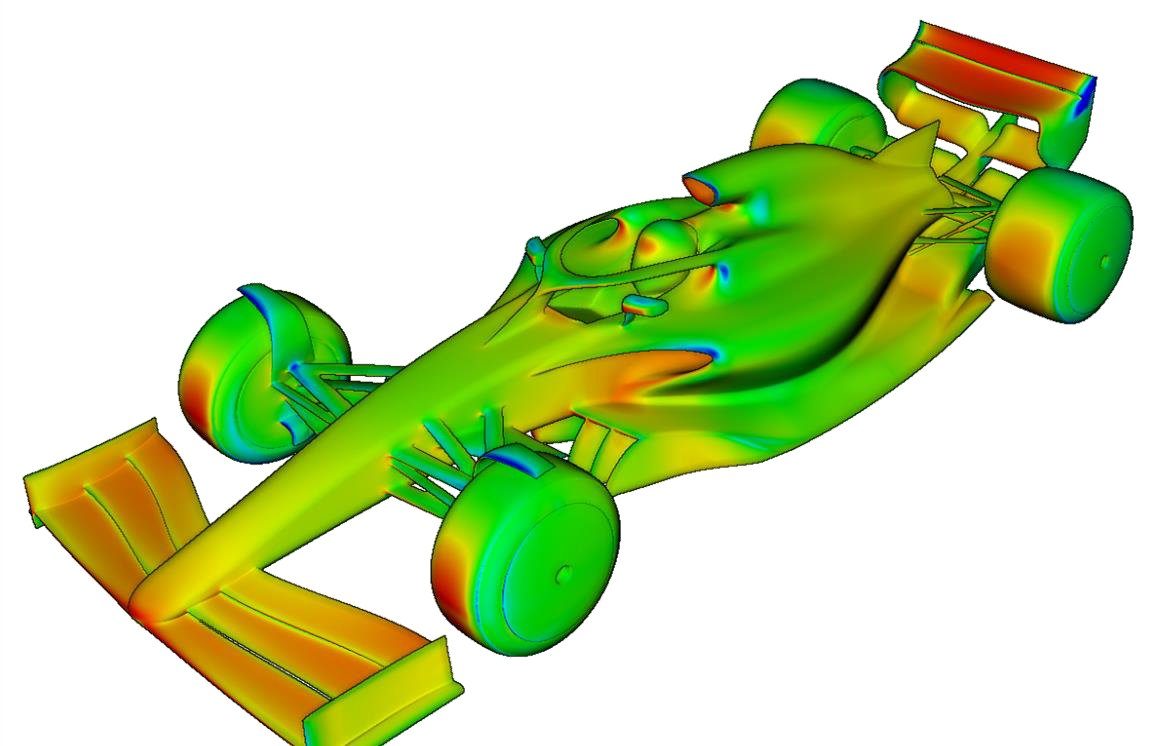Cap'n Jack
Premium
- 10,062

- South of the South
- GoldMineGutted
What we have here are the apparent 2021 regulations. The information here comes from the F1technical forums, but from what I understand the original source is the latest issue of Racecar Engineering (https://www.zinio.com/au/racecar-engineering/console-1598-147614-i427334).
Once again, the regulations are designed to improve racing. The proposed regulations are hoped to bring downforce loss when following another car from 70% all the way down to 20%.

The CAD model teams are currently working with - codenamed INDIA.
The one big takeaway from the proposal is effectively the removal of the flat floor rule, allowing teams to design large air inlets at the front of the floor, leading to a bigger diffuser than what we see currently. But there’s a whole raft of interesting new details which may be polarising, such as the 18” wheels and fins over the front wheels.
And here’s a bonus version of the CAD model featuring a Ferrari livery, provided by AMuS.



Once again, the regulations are designed to improve racing. The proposed regulations are hoped to bring downforce loss when following another car from 70% all the way down to 20%.

The CAD model teams are currently working with - codenamed INDIA.
- Reduction in front tyre width to 270mm (rear remains 405mm) with 710mm outer diameter 18" tyres [already confirmed]
- Maximum(or mandatory?) wheelbase of 3400mm (down from 3600 to 3650mm of 2019 cars)
- Front wing rule builds upon the 2019 rule to have a three-element front wing connected directly to nose (i.e., no Y250 vortex), with 50-100mm lesser overall width than 2019, end plates appear to remain similar
- Apparent removal of "stub" nose loophole
- Fins over front wheels to manage front wheel wake
- Flat floor rule is generally abandoned, with no more tea tray etc
- Champcar style underbody inlet with vortex generator strakes. Prescribed tunnel inlet area. The current unrestricted bodywork areas around the bargeboards are presumably eliminated.
- Greater diffuser angle than 2019 F1 cars with the diffuser starting further up the car and ahead of the ahead of the rear axle, similar to older CART cars or the Swift Formula Nippon car
- Rear wing blends into endplates with no more separate vertical pieces
- +50kg on minimum weight due to various (heavy) standard parts
The one big takeaway from the proposal is effectively the removal of the flat floor rule, allowing teams to design large air inlets at the front of the floor, leading to a bigger diffuser than what we see currently. But there’s a whole raft of interesting new details which may be polarising, such as the 18” wheels and fins over the front wheels.
And here’s a bonus version of the CAD model featuring a Ferrari livery, provided by AMuS.

 Personally, I enjoyed very much the few years before they made them super grippy again. We got to see some cool 4-wheel-drifts from Ricciardo and Alonso. The only 4-wheel-drift we'll see all of this year is Bottas at the Grand Hotel hairpin, because that corner is so slow, wings have much less effect.
Personally, I enjoyed very much the few years before they made them super grippy again. We got to see some cool 4-wheel-drifts from Ricciardo and Alonso. The only 4-wheel-drift we'll see all of this year is Bottas at the Grand Hotel hairpin, because that corner is so slow, wings have much less effect. Just the type of person that would take in an interest in this technical sport. He just about rolled his eyes. He didn't particularly care that they were heavy because of hybrid systems.
Just the type of person that would take in an interest in this technical sport. He just about rolled his eyes. He didn't particularly care that they were heavy because of hybrid systems.